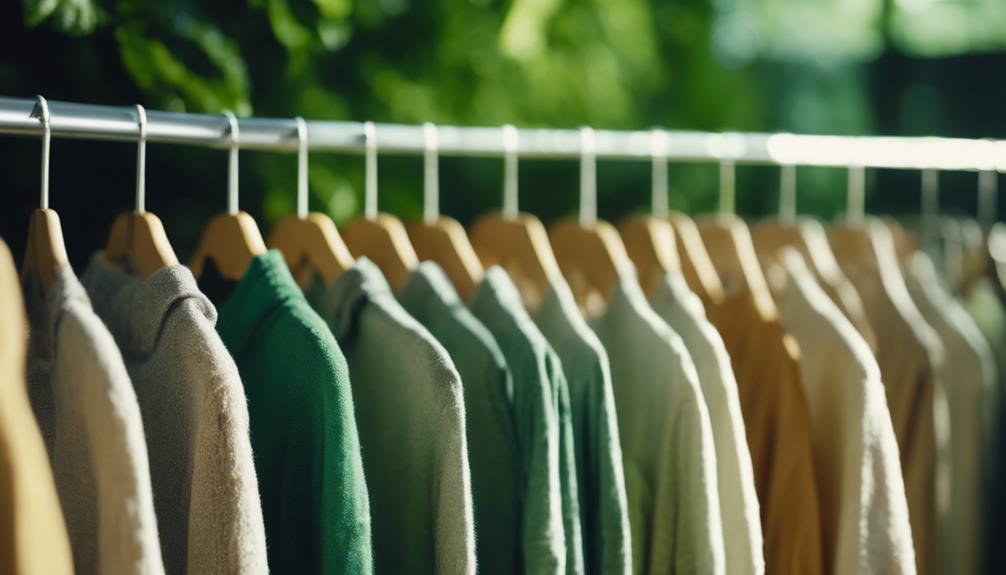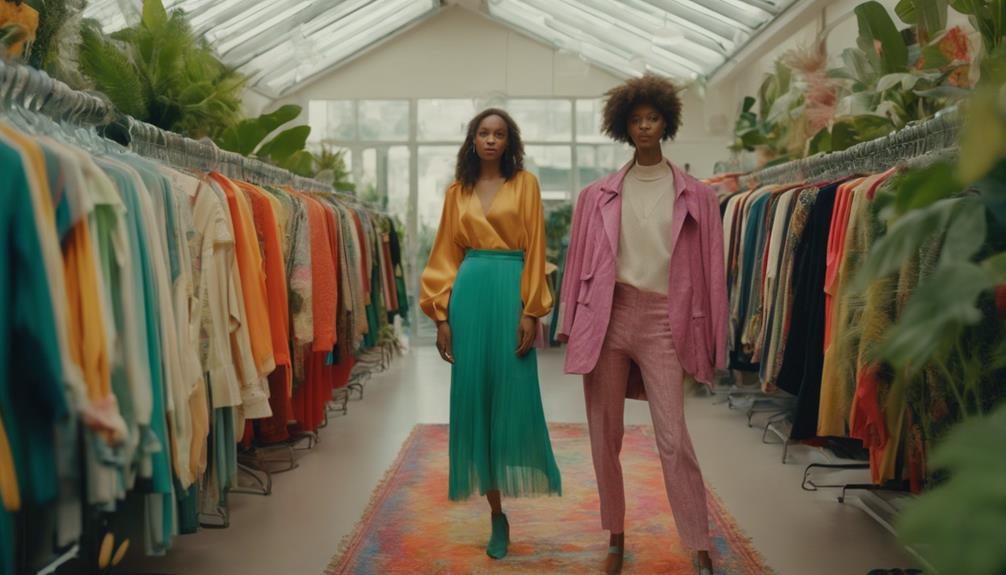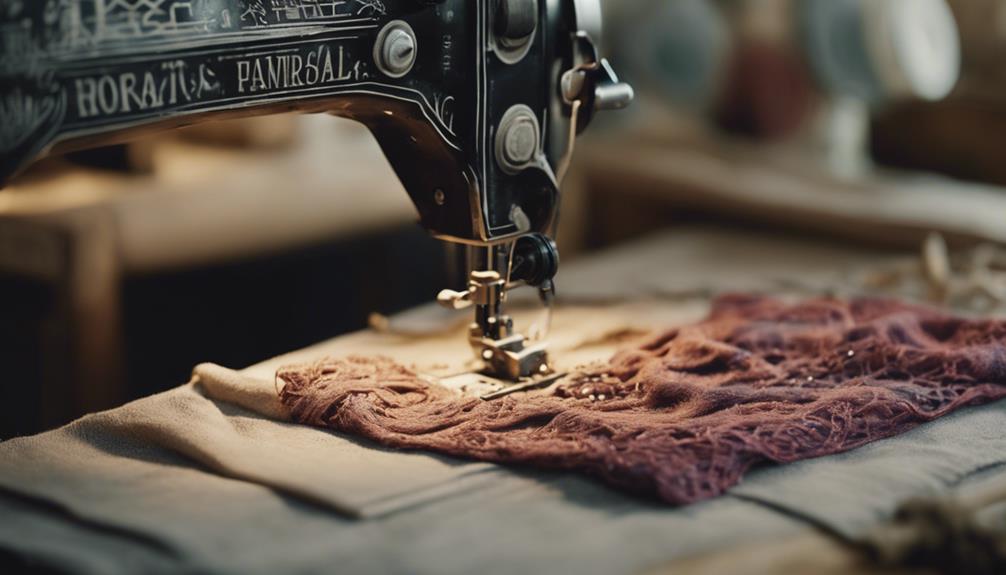Eco-conscious or sustainable fashion is about making clothing choices that consider the well-being of both people and the environment. It focuses on ethical production, responsibly sourcing materials, and reducing waste through recycling and upcycling. It may come as a surprise to learn that traditional fashion significantly contributes to pollution and resource depletion. By supporting brands that prioritize fair labor practices and eco-friendly materials, you not only endorse ethical labor but also help reduce the industry’s carbon footprint. By delving deeper into this subject, you will encounter innovative practices and community solutions that are shaping the future of fashion in an environmentally conscious way. One effective method to learn more about sustainable fashion resources is by seeking out eco-conscious brands and designers that emphasize sustainability in their production processes. In addition, there are various online platforms and communities that are dedicated to promoting and sharing information about sustainable fashion, providing valuable resources and tips for making more eco-friendly clothing choices. By actively engaging with these resources, individuals can make informed decisions that support a more sustainable and ethical fashion industry.
Key Takeaways
- Sustainable fashion emphasizes ethical production, reducing pollution, and ensuring fair wages for workers in the clothing industry.
- It promotes circular fashion principles, encouraging recycling, upcycling, and thrifting to minimize waste and extend garment life.
- Eco-friendly materials, such as organic cotton and recycled fibers, significantly lower environmental impact compared to conventional fabrics.
- Fast fashion contributes heavily to pollution, accounting for 20% of industrial water pollution and generating enormous waste yearly.
Understanding Sustainable Fashion
Sustainable fashion is all about making eco-friendly and ethical choices in clothing production to reduce environmental impact and promote fair labor practices. This approach addresses the fashion industry's heavy reliance on new resources, with approximately 97% of clothing production depending on them. By emphasizing recycling and the use of recycled materials, you contribute to a healthier planet.
When you choose sustainable fashion, you're also supporting ethical fashion. Ethical brands prioritize transparency in their supply chains, ensuring that you know where your clothing comes from and how it's made. By opting for these brands, you foster consumer trust and encourage better practices in the industry.
The environmental impact of traditional fashion is staggering, contributing up to 10% of global greenhouse gas emissions. By shifting your purchasing habits to include sustainable brands, you play an essential role in mitigating climate change.
Additionally, the sustainable fashion movement promotes conscious consumerism, appealing to those who want stylish, eco-friendly options that don't compromise aesthetics. So, the next time you're shopping, consider how your choices can make a difference—after all, every little step toward sustainable fashion counts!
Significance of Eco-Friendly Practices

Eco-friendly practices in fashion play an indispensable role in reducing environmental harm and promoting a more ethical industry. By adopting sustainable methods, you can help minimize the industry's significant impact on the environment. For instance, traditional clothing production relies heavily on new resources, with a staggering 97% of clothing made from raw materials. This creates a pressing need for practices that conserve these resources and reduce pollution.
Additionally, sustainable fashion promotes ethical labor practices, guaranteeing fair wages and safe working conditions for workers, unlike the exploitative practices common in fast fashion. By choosing eco-friendly options, you also contribute to decreasing the carbon footprint of the fashion industry, which currently accounts for about 10% of global greenhouse gas emissions.
Here's a quick overview of the significance of eco-friendly practices:
| Aspect | Importance |
|---|---|
| Environmental Impact | Reduces pollution and resource consumption |
| Ethical Labor Practices | Guarantees fair wages and safe working conditions |
| Carbon Footprint | Lowers greenhouse gas emissions |
| Consumer Demand | 71% of millennials prioritize sustainability |
Embracing these practices isn't just beneficial for the planet; it's also crucial for fostering a fairer industry.
Key Components of Sustainable Fashion

When you think about sustainable fashion, three key components stand out: ethical production practices, circular fashion principles, and eco-friendly materials.
These elements not only promote social equity but also help reduce waste and pollution in the industry.
Ethical Production Practices
Ethical production practices play an essential role in shaping a fashion industry that values fair wages, safe working conditions, and transparency. When you choose sustainable fashion, you're supporting brands that prioritize these principles, ensuring that workers are treated with dignity and respect. By collaborating with certified factories that adhere to strict labor standards, these brands create a more equitable environment for everyone involved in the production process.
Moreover, sustainable fashion emphasizes the use of eco-friendly materials, like organic cotton and recycled fabrics. Not only do these materials reduce the environmental impact of fashion, but they also promote ethical sourcing, ensuring that every step of the supply chain is accountable. You mightn't realize that the fashion industry is responsible for about 20% of global industrial water pollution. That's why clean manufacturing processes, integral to ethical production practices, are vital for environmental sustainability.
As consumer awareness about labor conditions and environmental impacts grows, demand for brands that adopt ethical production practices is increasing. By choosing to support these brands, you're playing a part in fostering a more responsible fashion industry that values both people and the planet.
Circular Fashion Principles
Circular fashion principles focus on recycling, upcycling, and thrifting to extend the life of garments while greatly cutting down on waste and resource consumption.
This approach is a key part of the circular economy, transforming the traditional linear fashion model into one that values sustainability and longevity.
By adopting these sustainable practices, you can help minimize your impact on the planet.
Here are some practical ways to embrace circular fashion:
- Recycle Materials: Choose brands that utilize recycled materials in their products.
- Upcycle: Get creative! Turn old clothing into new pieces or home decor.
- Thrift: Shop second-hand to find unique items while reducing demand for new production.
- Clothing Swaps: Organize or join clothing swaps with friends to refresh your wardrobe without buying.
Eco-Friendly Materials Usage
Eco-friendly materials play an essential role in sustainable fashion by reducing environmental impact and conserving valuable resources. As you immerse yourself in your wardrobe choices, consider that 97% of clothing production relies on new resources, meaning only 3% is recycled. This highlights the importance of selecting sustainable fabrics, like organic cotton, which can cut water usage by 91% compared to conventional methods.
Many fashion brands are now shifting away from fossil fuel-based materials like polyester and nylon, which greatly contribute to greenhouse gas emissions. Instead, they're embracing eco-friendly materials such as ECONYL®, which can save 70,000 barrels of oil and prevent 57,100 tons of CO2 from entering the atmosphere for every 10,000 tons produced.
However, only 15% of consumers currently recycle their used clothing, indicating a pressing need for greater awareness and improved infrastructure in the fashion industry. By supporting brands that prioritize sustainable fabrics, you not only help reduce environmental impact but also encourage a shift toward a more responsible fashion landscape.
Your choices matter, and opting for eco-friendly materials can make a considerable difference.
Environmental Consequences of Fast Fashion
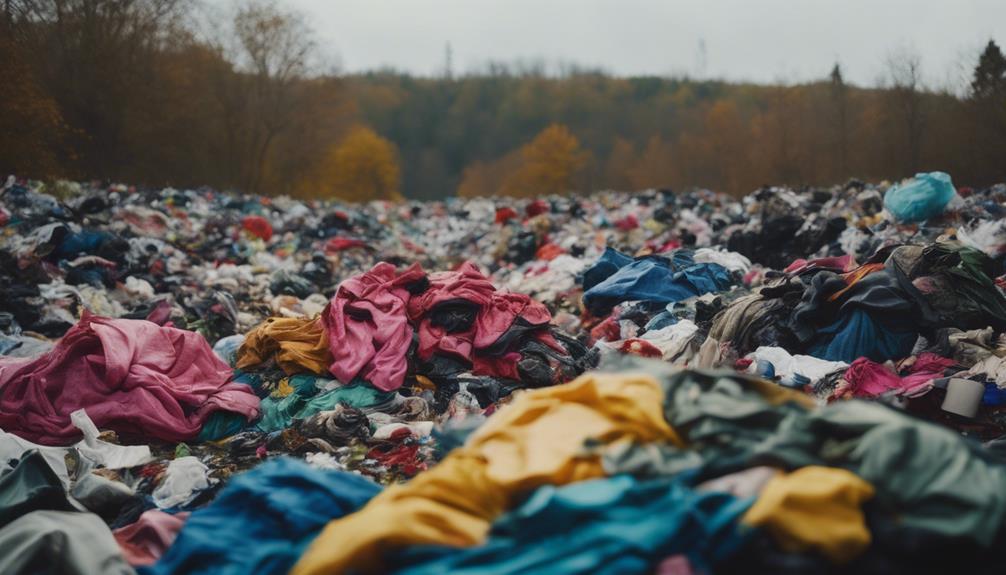
Fast fashion takes a heavy toll on the environment, with the industry being the second-largest polluter worldwide. The rapid production cycles and cheap materials contribute considerably to the environmental consequences we face today. You mightn't realize how your clothing choices impact our planet. Here are some alarming facts about fast fashion:
- The fashion industry causes 20% of industrial water pollution, largely due to harmful chemicals used in production.
- Fast fashion generates around 92 million tons of waste yearly, with 60% of garments discarded within a year of purchase.
- Apparel and footwear contribute to 8% of global greenhouse gas emissions, exacerbating climate change.
- Synthetic fibers lead to microplastic pollution, with 500,000 tons entering oceans from laundry every year.
These issues challenge us to rethink our fashion consumption and advocate for a sustainable future.
Strategies for Sustainable Consumption

When you choose thrift shopping, you not only save money but also help reduce waste by giving clothes a second life.
Attending clothing swap events lets you refresh your wardrobe without buying new items, promoting sustainability in a fun and social way.
Both strategies empower you to make a positive impact on the fashion industry while enjoying unique finds.
Thrift Shopping Benefits
Thrift shopping offers a practical way to embrace sustainable consumption while considerably reducing waste and environmental impact. By choosing to buy second-hand, you're not just saving money; you're actively participating in a movement that fights against the detrimental effects of fast fashion.
Here are some key benefits of thrift shopping:
- Reduces landfill waste: Extending the lifespan of clothing can help keep up to 60% of items out of landfills.
- Decreases carbon footprint: Thrift shopping markedly lowers the emissions linked to producing new clothes—an industry responsible for up to 10% of global warming.
- Conserves water: Buying vintage can save about 27,000 liters of water per outfit compared to buying new.
- Promotes a circular economy: Your purchases support recycling and upcycling, making the fashion industry much more sustainable.
Clothing Swap Events
Clothing swap events are a fantastic way to refresh your wardrobe while actively promoting sustainable consumption and reducing textile waste. By exchanging pre-loved garments, you're not just giving your closet a makeover; you're also participating in a community effort that extends the lifecycle of clothing. This is vital in an industry where buying new often leads to 60% of clothing items ending up in landfills within a year.
When you attend a clothing swap, you sidestep the fast fashion cycle and embrace a more eco-conscious approach. Every item you reuse greatly decreases the environmental impact associated with production. In fact, extending the use of clothing by just nine months can reduce its impact by 30%.
These events encourage you to reflect on clothing labels and their impact, fostering awareness about fashion waste issues. Plus, they're a fun way to engage with others who share your values. Organizing or participating in a local swap not only helps you find unique pieces but also promotes the benefits of a circular fashion economy.
Innovations in Eco-Friendly Fashion
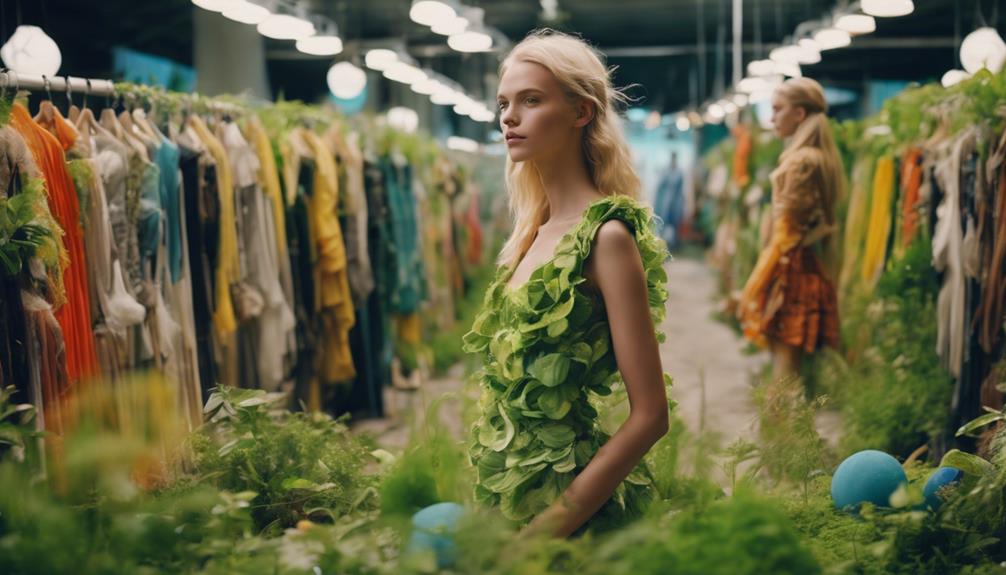
Innovations in eco-friendly fashion are reshaping the industry by introducing sustainable materials and technologies that minimize environmental impact. You might be surprised to learn how these advancements are changing the way we think about clothing production.
Here are some key innovations you should know:
- ECONYL®: Made from recycled ocean plastics, saving 70,000 barrels of oil per 10,000 tons produced.
- Plant-Based Alternatives: Fabrics like pineapple leather and ocean trash polyester address animal welfare and waste issues.
- Recycled Fibers: More brands are using recycled materials, which helps conserve natural resources and reduces landfill waste.
- Upcycling Technologies: Innovative textile-to-textile recycling processes are transforming waste management in fashion.
These innovations not only highlight the sustainable materials used in fashion but also pave the way for recycling practices that can greatly reduce the fashion industry's carbon footprint.
Community Engagement and Solutions
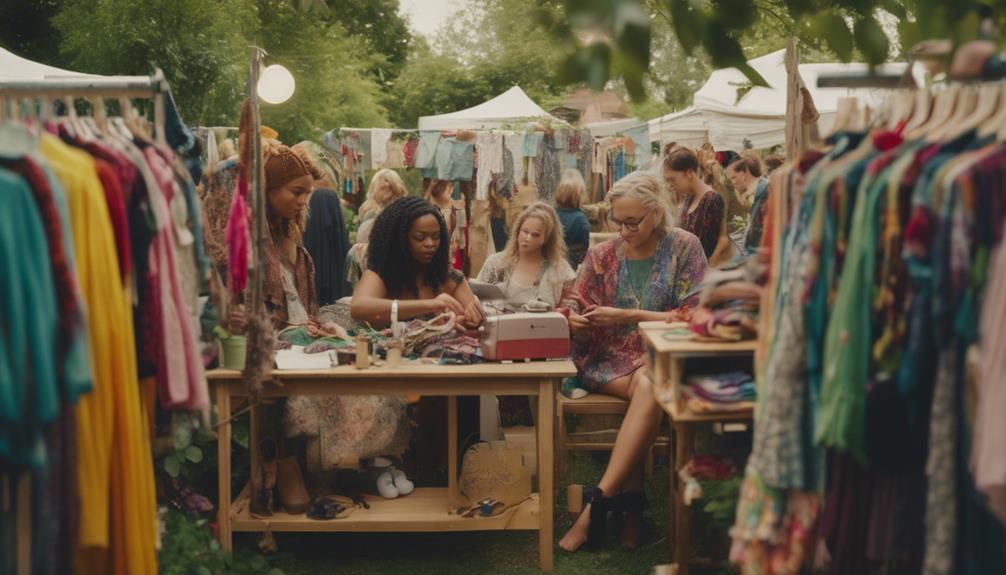
Community engagement plays an essential role in advancing sustainable fashion by fostering connections and encouraging collective actions that reduce waste and promote eco-conscious practices. One effective way to get involved is through clothing swaps, where you can refresh your wardrobe without contributing to overconsumption. These events not only help you discover new styles but also build social networks while raising awareness about waste issues.
Participating in local initiatives centered around sustainable fashion enhances your understanding of recycling and upcycling. Workshops focused on repair skills empower you to extend the life of your garments, reducing overall waste. By engaging in these community-based solutions, you make eco-conscious choices easier and more accessible.
Moreover, supporting businesses that prioritize ethical labor conditions strengthens local economies and aligns your shopping habits with sustainable practices. When you connect with like-minded individuals, you foster a culture of sustainability that encourages everyone to rethink their fashion choices.
Together, these collective efforts make a significant impact, transforming the fashion landscape into one that values sustainability and community well-being. So, immerse yourself in your local sustainable fashion scene and discover how your participation can lead to positive change!
Smart Shopping for Sustainability

Smart shopping emphasizes making informed choices that not only benefit your wardrobe but also contribute to a more sustainable fashion industry. By adopting smart shopping habits, you can actively support eco-friendly practices while enjoying unique styles.
Here are some tips to guide you:
- Prioritize thrift and consignment stores for sustainable options that minimize waste.
- Research ethical brands to verify their production and sourcing practices align with your sustainability values.
- Invest in timeless designs instead of fleeting trends to reduce clothing turnover.
- Choose clothing made from recycled materials, which lowers landfill contributions and conserves resources.
Future Trends in Sustainable Fashion
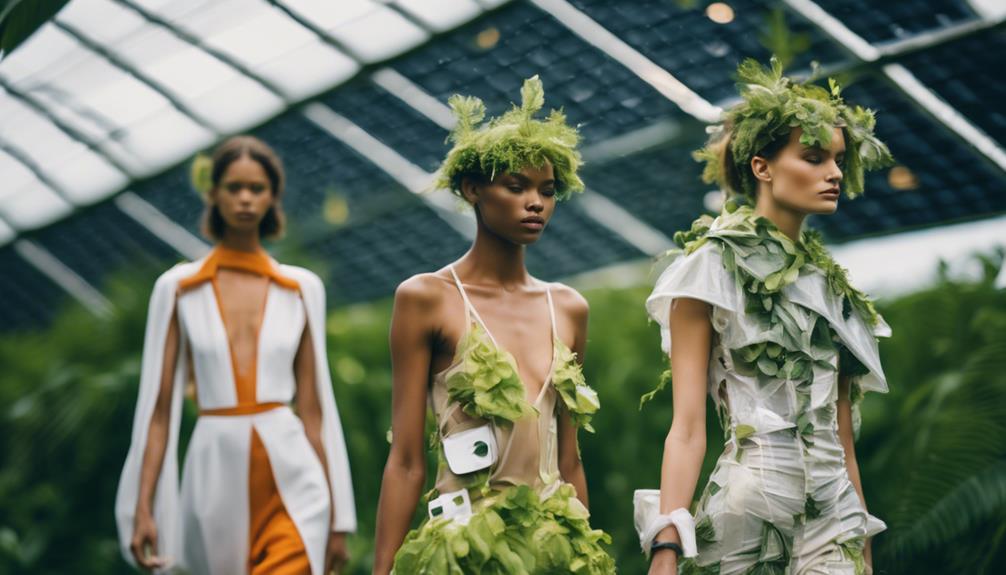
As the fashion landscape evolves, you're likely to see a stronger emphasis on sustainable practices that align with consumer values and environmental responsibility. The global fashion industry is increasingly committing to sustainability, with many brands adopting new production processes aimed at reducing their environmental impact. By 2030, circular fashion principles will promote recycling and upcycling initiatives, potentially diverting millions of tons of textile waste from landfills.
You'll notice that innovative materials, like ECONYL®, which saves 70,000 barrels of oil per 10,000 tons produced, are becoming mainstream, showcasing a commitment to resource conservation. Consumer demand for eco-friendly fashion is skyrocketing, with 71% of millennials prioritizing sustainability in their buying habits. This shift in purchasing behavior means brands will have to adapt and respond to these values.
In the future, expect increased collaboration between brands and consumers, fostering a collective approach to responsible production and consumption. As you navigate your fashion choices, you'll find that the trends aren't just about style but also about making a positive impact on the planet. Embracing these changes isn't just a trend; it's a movement toward a more sustainable future.
Frequently Asked Questions
What Is Eco-Friendly or Sustainable Fashion?
When you consider eco-friendly fashion, think about minimizing waste and choosing materials that won't harm the planet. You're supporting brands that prioritize ethical practices and reduce pollution, making a positive impact with every purchase.
What Is Eco Fashion and Why Is It Important?
Imagine wearing a dress made from recycled ocean plastics. Eco fashion's important because it reduces waste and pollution, promotes fair labor, and encourages you to make conscious choices that benefit both the planet and workers alike.
What Is the Point of Sustainable Fashion?
The point of sustainable fashion is to reduce environmental harm, promote ethical practices, and encourage conscious consumerism. By choosing sustainable options, you actively contribute to a healthier planet and support fair treatment for workers.
What Do People Think About Sustainable Fashion?
Sustainable fashion often feels like a refreshing change amidst pollution. You might find that while many admire eco-friendly choices, misconceptions about cost and value still cloud their willingness to embrace this positive change.
Conclusion
So, next time you're tempted by that $10 shirt that'll probably disintegrate after one wash, remember: sustainability isn't just a trendy buzzword for hipsters.
It's about making choices that won't leave our planet gasping for air.
Embrace eco-friendly fashion, because who wouldn't want to look good while saving the world?
After all, nothing screams “I care” like turning your wardrobe into a green statement—one overpriced organic cotton tee at a time!


